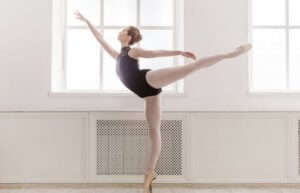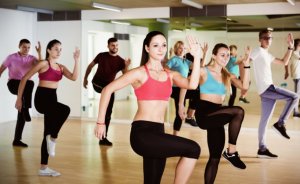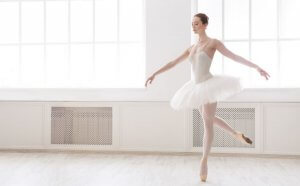Psychomotor Domain in Dance

A dancer dancing to the rhythm of music and transmitting a feeling through dance is always harmonious to the eye. The dancers on stage perform movements with apparent simplicity, but in reality, the dance steps are quite demanding. Therefore, they require a lot of physical and mental work.
Dancers must develop a skill that keeps the movements connected with technique, music, and feelings. This ability is psychomotor. The term ‘psycho’ refers to the soul or mental activity, and ‘motor’ to the motor capacity.
Thus, we can define psychomotor skills as a discipline that manages the interaction between knowledge, movements, and emotions.
Movement and emotion
Our reactions and movements are produced through instructions from the brain. These processes of impulse and response have several elements. However, we want to focus on how psychomotor skills allow for better control of emotional impulses and movements. Psychomotor skills can be divided into three parts:
- Cognitive: attention, concentration, memory, and creativity.
- Motor: mastering the movements of the body.
- Social: relating to the environment and dealing with situations.

These factors can be developed separately, and psychomotricity is achieved through the union of all these factors. Also, there is no age limit to improve this ability. However, childhood is when you can best take advantage of stimulating psychomotor skills. That is why, people who play a sport or play an instrument from a very young age, usually have better psychomotor control.
Psychomotor skills in dance
Dance is an art that consists of the creation of movements to the rhythm of the music. It’s an expressive domain where artists tell stories and transmit emotions. The former dancer and choreographer Martha Graham once said that “dance is the secret language of the soul”. This perfectly summarises, in just a few words, what psychomotor means.
The psychomotricity in dance is absolutely essential, although they are skills that complement each other. That is, to dance you have to have a good psychomotor ability and to have good psychomotor skills you also have to know how to dance. So both elements are developing and benefiting from each other.
Why dance is ideal for psychomotricity
For an ordinary person, trying to learn ballet movements to the rhythm of music is quite complicated. This is because the ordinary person doesn’t have the same level of body control and sense of space as a dancer. Certainly, dancers must work very hard and for a long time to fine-tune the control of their bodies and establish a connection with their mind to dance.

Choreography and control
Basically, dance uses psychomotor development to involve our entire body. A dancer when training must be aware that they must control their body from head to toe. Remember, the choreography and conveying of emotions both combine to perform on stage with ease. Therefore, dance is the best option to develop psychomotor skills:
- Reflexes: react quickly and intelligently to stimuli.
- Balance: stay balanced in the position where you are.
- Rhythm: create movements with the correct frequency and time.
- Breathing and relaxation: learn to control breathing at times that merit. And, learn to relax the muscles of the body separately and voluntarily.
- Knowledge of the body: the body being the tool for the art of dance, is aware of the parts that comprise it.
- Motricity: control and coordination of the body.
- Proprioception: feel the position of muscles and limbs without having to look at them.
- Interoception: receptors that send information to the brain in relation to the interior of the body.
- Creativity and expressiveness: the ability to create and express yourself according to what you feel and think.
Dance is a very beautiful discipline that brings many benefits. Other disciplines such as sports or music also work aspects of psychomotor skills. However, dance involves a more complex process that makes it much more effective. In addition to stimulating the brain to develop its intelligence. As Pina Bausch would say, “dance, dance, otherwise we’re lost”.
A dancer dancing to the rhythm of music and transmitting a feeling through dance is always harmonious to the eye. The dancers on stage perform movements with apparent simplicity, but in reality, the dance steps are quite demanding. Therefore, they require a lot of physical and mental work.
Dancers must develop a skill that keeps the movements connected with technique, music, and feelings. This ability is psychomotor. The term ‘psycho’ refers to the soul or mental activity, and ‘motor’ to the motor capacity.
Thus, we can define psychomotor skills as a discipline that manages the interaction between knowledge, movements, and emotions.
Movement and emotion
Our reactions and movements are produced through instructions from the brain. These processes of impulse and response have several elements. However, we want to focus on how psychomotor skills allow for better control of emotional impulses and movements. Psychomotor skills can be divided into three parts:
- Cognitive: attention, concentration, memory, and creativity.
- Motor: mastering the movements of the body.
- Social: relating to the environment and dealing with situations.

These factors can be developed separately, and psychomotricity is achieved through the union of all these factors. Also, there is no age limit to improve this ability. However, childhood is when you can best take advantage of stimulating psychomotor skills. That is why, people who play a sport or play an instrument from a very young age, usually have better psychomotor control.
Psychomotor skills in dance
Dance is an art that consists of the creation of movements to the rhythm of the music. It’s an expressive domain where artists tell stories and transmit emotions. The former dancer and choreographer Martha Graham once said that “dance is the secret language of the soul”. This perfectly summarises, in just a few words, what psychomotor means.
The psychomotricity in dance is absolutely essential, although they are skills that complement each other. That is, to dance you have to have a good psychomotor ability and to have good psychomotor skills you also have to know how to dance. So both elements are developing and benefiting from each other.
Why dance is ideal for psychomotricity
For an ordinary person, trying to learn ballet movements to the rhythm of music is quite complicated. This is because the ordinary person doesn’t have the same level of body control and sense of space as a dancer. Certainly, dancers must work very hard and for a long time to fine-tune the control of their bodies and establish a connection with their mind to dance.

Choreography and control
Basically, dance uses psychomotor development to involve our entire body. A dancer when training must be aware that they must control their body from head to toe. Remember, the choreography and conveying of emotions both combine to perform on stage with ease. Therefore, dance is the best option to develop psychomotor skills:
- Reflexes: react quickly and intelligently to stimuli.
- Balance: stay balanced in the position where you are.
- Rhythm: create movements with the correct frequency and time.
- Breathing and relaxation: learn to control breathing at times that merit. And, learn to relax the muscles of the body separately and voluntarily.
- Knowledge of the body: the body being the tool for the art of dance, is aware of the parts that comprise it.
- Motricity: control and coordination of the body.
- Proprioception: feel the position of muscles and limbs without having to look at them.
- Interoception: receptors that send information to the brain in relation to the interior of the body.
- Creativity and expressiveness: the ability to create and express yourself according to what you feel and think.
Dance is a very beautiful discipline that brings many benefits. Other disciplines such as sports or music also work aspects of psychomotor skills. However, dance involves a more complex process that makes it much more effective. In addition to stimulating the brain to develop its intelligence. As Pina Bausch would say, “dance, dance, otherwise we’re lost”.
This text is provided for informational purposes only and does not replace consultation with a professional. If in doubt, consult your specialist.








